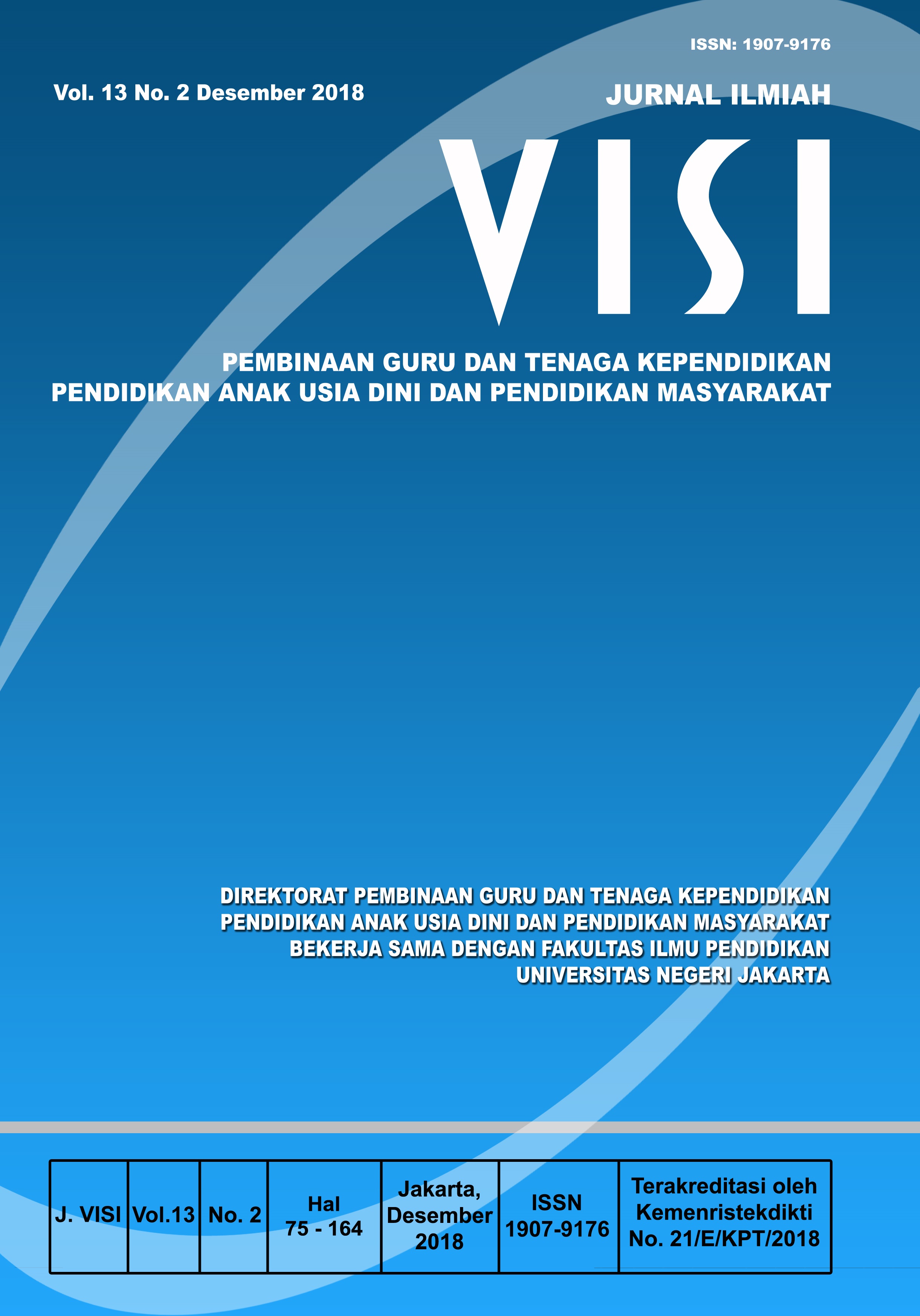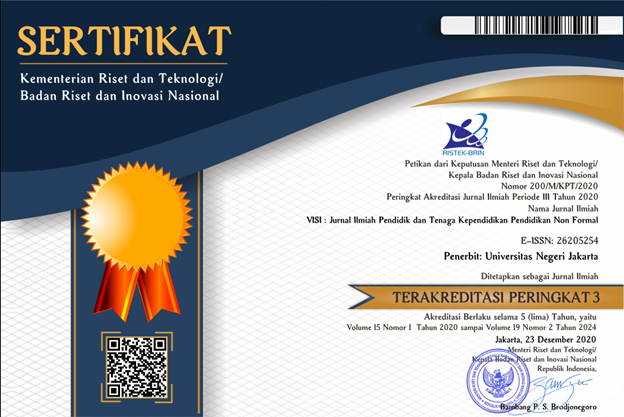MODEL PEMBERDAYAAN MASYARAKAT TERINTEGRASI DENGAN KEARIFAN DAN NILAI BUDAYA LOKAL MELALUI PENDEKATAN SOSIAL ENTREPRENEURSHIP
DOI:
https://doi.org/10.21009/JIV.1302.9Keywords:
integrated community empowerment model, wisdom and local cultural values, social entrepreneurship approachAbstract
The local wisdom describes the way to behave, to act, and to quickly respond towards the physical or cultural community’s environmental changes. The study was conducted in January-March 2017 in the area of a traditional village at kampong Naga Nagaratengah, Neglasari, Salawu, Tasikmalaya, West Java Province. The integrated community empowerment model with the wisdom and local cultural values aimed to increase the productivity, income and quality of life which was mutually beneficial. In this empowerment model, the research method employed was a qualitative approach with the descriptive method, and the techniques of data collection were the study of literature, observation, interviews, and documentation. The finding described the role of the community as one of the bases of the local wisdom role improvement that possessed by the Naga village community environment. Through the social entrepreneurship activities, a handy-craft was not only measured by its profit only, moreover it was viewed as a social cooperation between members of the community as well as providing the largest understanding to the community about the importance of the natural and cultural conservations for the survival of the kampong Naga community. The obedience and cultural inheritance in the form of values, norms, customs, and social roles continuously transpired from generation to generation. They become a unity in the social cultural environment and one of the tourism potential of the area.
References
Astuti, M. (2012). Pemberdayaan perempuan miskin berbasis pemanfaatan sumber daya lokal melalui pendekatan sosial enterpreneurship. Sosiokonsepsia, 17(3), 241–251. https://ejournal.kemsos.go.id/index.php?journal=SosioKonsepsia&page=article&op=view&path%5B%5D=829
Greertz, C. (1992). Kebudayaan dan agama. Yogyakarta: Kanisius.
Harsojo. (1997). Pengantar antropologi. Bandung: Bina Cipta.
Kamil, M. (2009). Mengembangkan pendidikan nonformal melalui PKBM di Indonesia: Sebuah pembelajaran dari kominkan di Jepang. Bandung: Alfabeta.
Moleong, L. J. (2011). Metode penelitian kualitatif. Bandung: Remaja Rosda Karya.
Nasution & Subino. (1988). Metode penelitian kualitatif naturalistik. Bandung: Tarsito.
Peraturan Daerah Kabupaten Tasikmalaya Nomor 2 Tahun 2012 tentang Rencana Tata Ruang Wilayah Kabupaten Tasikmalaya Tahun 2011-2031
Satori, D. (2012). Metodologi penelitian kualitatif. Bandung: Alfabeta.
Sudjana, D. (1993). Strategi pembelajaran partisipatif dalam pendidikan luar sekolah. Bandung: Nusantara Press.
Pynkyawati, T., Agung, E., Noviandi, A., Suhardiman, R.N., & Putri, M.A. (2014). Kajian desain struktur rumah tinggal masyarakat Kampung Naga di Tasikmalaya. Reka Karsa, 2(3), 1-11. doi: https://doi.org/10.26760/rekakarsa.v2i3.597
Suryadi, A. (2009). Mewujudkan masyarakat pembelajar. Bandung: Widya Aksara Press.
Zubaedi. (2007). Wacana pembangunan alternatif. Yogyakarta: Ar- Rizz Media.
Downloads
Published
How to Cite
Issue
Section
License
Authors who publish with this Journal agree to the following terms:
- Author retain copyright and grant the journal right of first publication with the work simultaneously licensed under a creative commons attribution licensethat allow others to share the work within an acknowledgement of the work’s authorship and initial publication of this journal.
- Authors are able to enter into separate, additional contractual arrangementfor the non-exclusive distribution of the journal’s published version of the work (e.g. acknowledgement of its initial publication in this journal).
- Authors are permitted and encouraged to post their work online(e.g. in institutional repositories or on their websites) prior to and during the submission process, as it can lead to productive exchanges, as well as earlier and greater citation of published works.
- Users/public use of this website will be licensed to CC BY-NC-SA Creative Commons Attribution-NonCommercial-ShareAlike 4.0 International License









